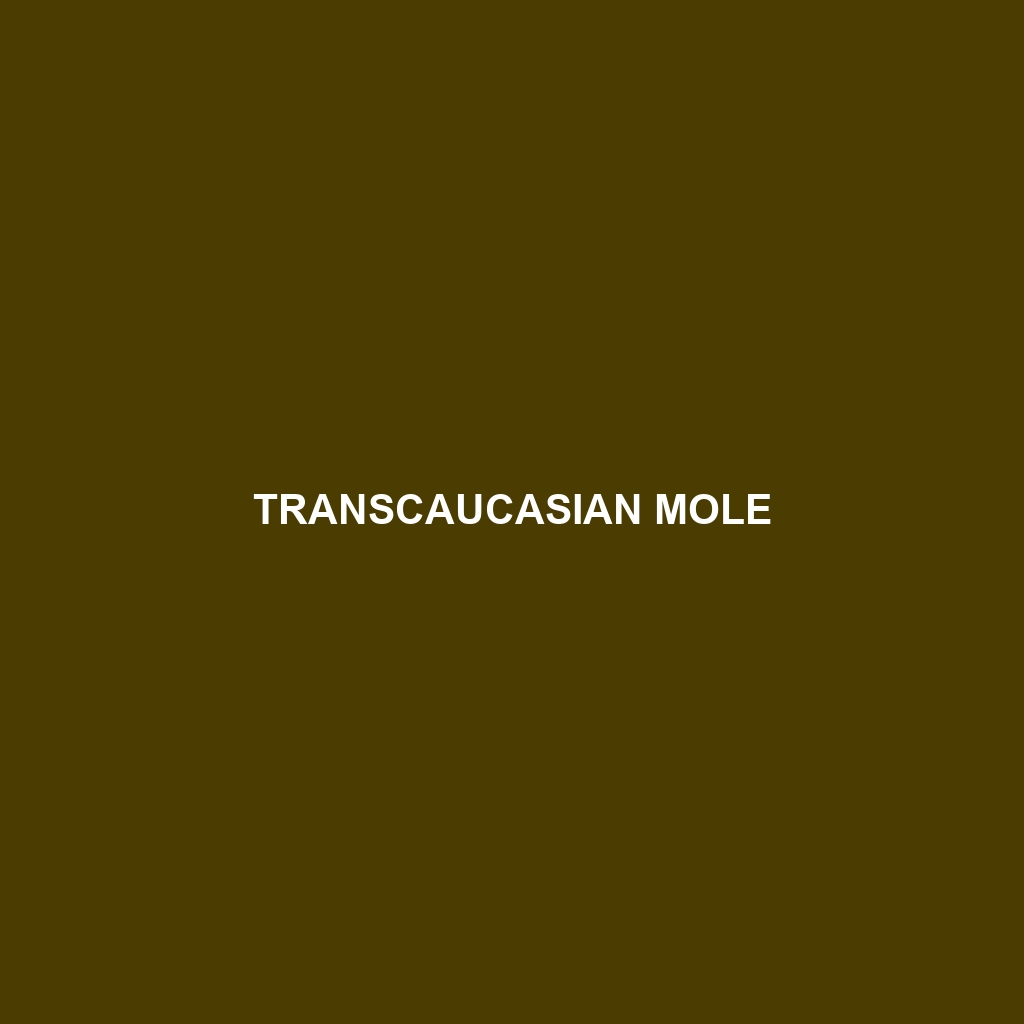Discover the Anilios ammodytes, or sand burrowing snake, a nocturnal species native to the sandy coastal regions of Australia. With its sleek, smooth body and unique burrowing abilities, this small snake plays a vital role in its ecosystem by controlling invertebrate populations and contributing to soil health.
Tag: earthworms
Transcaucasian Mole
Discover the fascinating world of the Transcaucasian Mole, a small yet vital mammal found in the lush forests and grasslands of the South Caucasus. With its exceptional burrowing abilities and nocturnal lifestyle, this mole plays a crucial role in soil aeration and pest control, while facing the threat of habitat loss. Learn about its unique adaptations, diet, and the importance of conservation efforts to protect this vulnerable species.
Balkan Mole
Discover the fascinating world of the **Balkan Mole** (*Talpa europaea*), a solitary burrower thriving in Eastern and Southeastern Europe. This compact creature, known for its impressive digging speed and extensive tunneling, plays a vital role in soil aeration and pest control. Learn about its unique adaptations, habitat preferences, and conservation status in our in-depth exploration.
Caucasian Mole
Explore the fascinating world of the **Caucasian Mole**, a unique species native to the mountainous regions of the **Caucasus**. With its nocturnal habits, impressive burrowing skills, and role as a vital soil aerator, this medium-sized creature plays a significant part in maintaining its ecosystem. Discover its physical traits, dietary preferences, and the challenges it faces in today's changing environment.
European Mole
Discover the fascinating world of the European Mole (*Talpa europaea*), a remarkable burrowing mammal thriving in the moist soils of Europe and parts of Asia. Known for their unique nocturnal behavior, impressive digging abilities, and critical role in aerating the soil, these solitary creatures are essential to maintaining healthy ecosystems. Learn more about their habitat, diet, and conservation status in our detailed exploration of this intriguing species.
White-tailed Mole
Discover the fascinating world of the **White-tailed Mole** (*Talpa leucura*), a remarkable creature that thrives in the temperate forests and grasslands of Europe. With its distinctive white tail and exceptional digging abilities, this nocturnal insectivore plays a crucial role in soil aeration and ecosystem health. Learn about its habitat, diet, reproduction, and conservation status in our latest blog post.
Altai Mole
Discover the fascinating world of the **Altai Mole** (*Talpa altaica*), a unique species thriving in the mountainous regions of Central Asia. With its remarkable burrowing abilities and solitary, nocturnal habits, this compact mammal plays a vital role in soil aeration and ecosystem balance. Learn about its habitat, diet, and the conservation efforts needed to protect this vulnerable creature from habitat destruction.
Japanese Mountain Mole
Discover the fascinating world of the Japanese Mountain Mole (*Talpa japonica*), a unique species native to Japan's mountainous regions. This medium-sized mammal, known for its extensive burrowing behavior and significant role in aerating soil, plays a crucial part in maintaining the health of its ecosystem. Learn about its habitat, diet, reproduction, and the conservation challenges it faces as it navigates its underground life.
La Touche’s Mole
Discover the fascinating La Touche's Mole (*Scaptochirus la touchei*), a secretive inhabitant of China's mountainous regions. This remarkable creature, known for its strong digging abilities and rich, nocturnal lifestyle, plays a vital role in soil aeration and nutrient cycling while facing the challenges of habitat loss. Learn more about its unique adaptations, diet, and the conservation efforts needed to protect this vulnerable species in our latest blog post!
Formosan Mole
Discover the fascinating world of the Formosan Mole (*Talpa stankovici*), a unique subterranean dweller native to Taiwan's forested and mountainous regions. With its exceptional digging abilities, this nocturnal creature plays a vital role in soil health and ecosystem balance while facing threats from habitat loss. Learn about its distinctive physical traits, solitary behavior, and the importance of conservation efforts to protect this vulnerable species.









